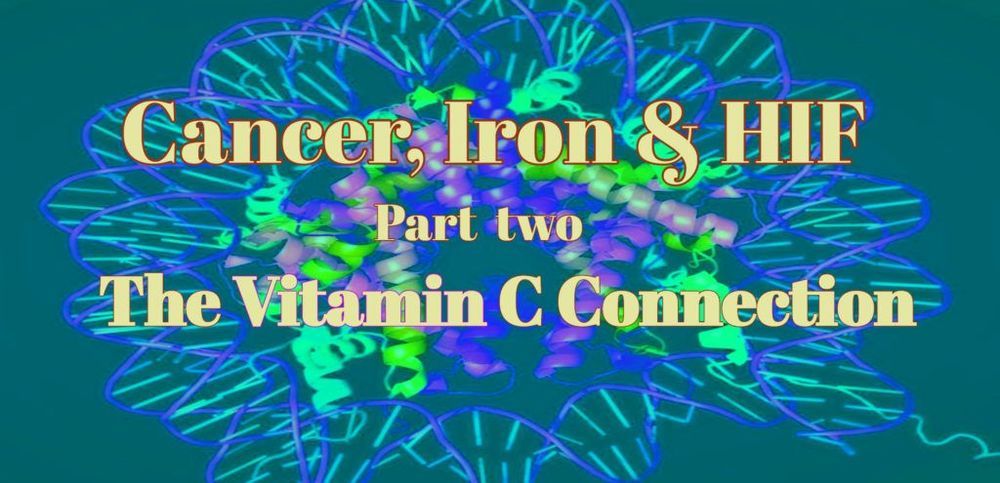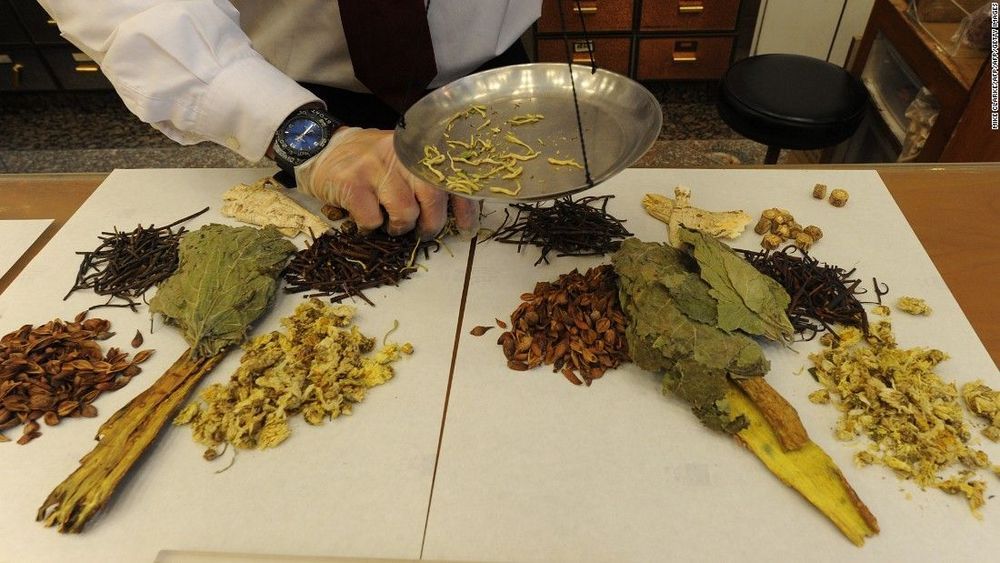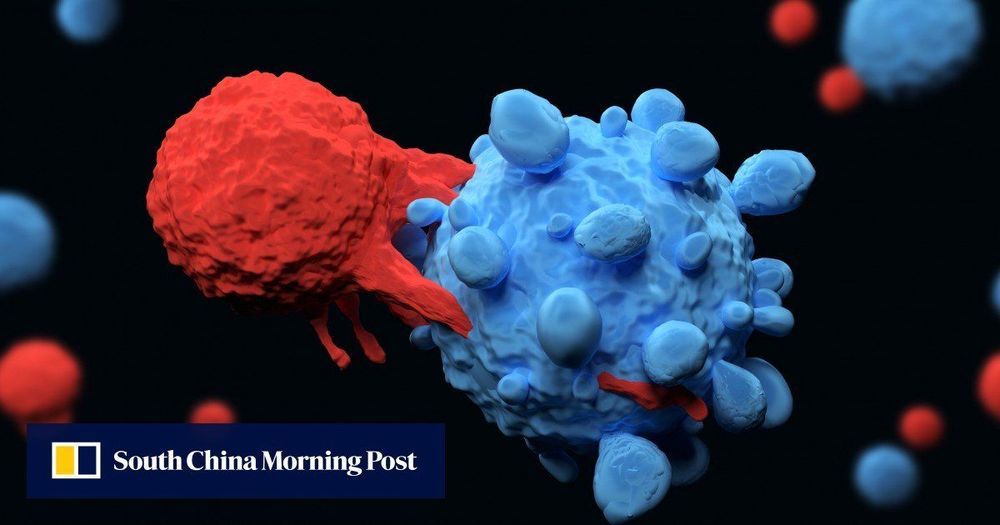Cancer cells love iron and HIF1a. Ferrous heme is life supporting while ferric heme is cytotoxic. Vit C is the protector and modulator of iron metabolism.


Just like our healthy cells, malignant cancer cells need energy to survive. Dr. Sophia Lunt explains how she intends to cut off cancer cells’ survival potential, and pioneer a new way of halting their growth.
Dr. Sophia Lunt began her training in metabolism at Princeton University, where she received her Ph.D. studying the metabolic consequences of the antibiotic drug trimethoprim. As a postdoctoral fellow at MIT, she focused on cancer metabolism, and was awarded the CDMRP PRCRP Visionary Postdoctoral Fellowship from the Department of Defense to support her research. She currently runs a research lab focused on cancer metabolism at Michigan State University.
This talk was given at a TEDx event using the TED conference format but independently organized by a local community.

Just seven years after scientists announced the first use of Crispr-Cas9 gene editing technology on human cells, researchers shared new evidence this week that Crispr can be used to cure two serious genetic disorders.
On Tuesday, NPR reported that a patient in Nashville had seen a dramatic decline in her symptoms of sickle cell disease after receiving a single gene therapy treatment in July. Sickle cell, which can lead to inflammation, debilitating pain, and life-threatening circulatory problems, affects millions of people around the world.
That same day, the biotech companies behind the sickle-cell treatment, Crispr Therapeutics and Vertex, also shared promising results from their first attempt to cure a case of beta thalassemia, another genetic disorder that affects blood proteins. Nine months after receiving the experimental treatment, a patient in Germany with beta thalassemia has almost no signs of the disorder.
Cancer is a growing worldwide epidemic, with staggering statistics: 20,000 people dying of cancer every day; 1 person out of 3 will be faced with cancer at one point in their life; and 1 million Americans are diagnosed with cancer every year.

Ira Pastor, ideaXme exponential health ambassador and founder of Bioquark, interviews Sister Ilia Delio PhD. OSF, a Franciscan Sister (Order of St Francis of Washington, DC) who holds the Josephine C. Connelly Endowed Chair in Theology at Villanova University.
Ira Pastor Comments:
On previous shows, as we’ve spent time discussing the bio-architecture of life, we have spent time at various levels of this unique hierarchy, from the very, very small (as we’ve delved into topics like quantum biology), to the very large (as we discussed themes like chronobiology), and a lot of domains in between: the genome, micro-biome, systems biology, etc.
Today, however, we are going to further and deeper than we’ve ever been before.
Sister Ilia Delio, PhD
Dr. / Sister Ilia Delio PhD. OSF, is a Franciscan Sister (Order of St Francis of Washington, DC) and holds the Josephine C. Connelly Endowed Chair in Theology at Villanova University.
A native of Newark, NJ, she earned a B.S. in Biology from DeSales University, a masters degree in Biology at Seton Hall, and a doctorate in pharmacology from Rutgers University-School of Healthcare and Biomedical Sciences (with specialization in neuro-toxicology, with an emphasis on neuromuscular disease) and she wrote her dissertation on axonal dysfunction in an experimental model of Lou Gehrig’s (ALS) disease.

Herbs to increase breast milk supply and heal the spleen. Traditional remedies which promise to cure insomnia and acne. Secret cancer treatments that have been ignored or suppressed by Western medicine.
Practitioners of Traditional Chinese Medicine (TCM) have a long history of making outsized claims, not least in the case of fertility and virility, where demand for tiger penis and rhino horn has devastated wild populations.
Quackery and false claims exist in all branches of medicine, but doctors in Europe are concerned that unverified claims made under the guise of TCM are being spread worldwide by social media, inadvertently aided by the World Health Organization (WHO).


We’re currently in dire need of new weapons against infectious bacteria, especially those in a tough-to-kill class known as gram-negative bacteria. Now, researchers at Northeastern University have discovered just that, hiding in the gut of a tiny, soil-dwelling, parasitic worm. Tests on mice have so far proved promising.
For decades we’ve had the upper hand over bacteria, clearing out many infections fairly easily with antibiotics. But extensive use has led to an arms race between us and bacteria. As they evolve resistance to our best drugs, we develop new ones and use those until the bugs become resistant to those too.
But this cycle is starting to break down, and not in our favor. Developing new drugs is time and cost-intensive process, and bacteria are evolving resistances faster than we can keep up. There are now “superbugs” that are resistant to all known drugs. The situation is getting so bad that a recent report warned that superbugs could kill up to 10 million people a year by 2050, casting us back into the “dark ages of medicine.”
Cornell researchers have made a new discovery about how seemingly minor aspects of the internal structure of bone can be strengthened to withstand repeated wear and tear, a finding that could help treat patients suffering from osteoporosis. It could also lead to the creation of more durable, lightweight materials for the aerospace industry.
The team’s paper, “Bone-Inspired Microarchitectures Achieve Enhanced Fatigue Life,” was published Nov. 18 in the Proceedings of the National Academy of Sciences. Co-authors include Cornell doctoral students Cameron Aubin and Marysol Luna; postdoctoral researcher Floor Lambers; Pablo Zavattieri and Adwait Trikanad at Purdue University; and Clare Rimnac at Case Western Reserve University.
For decades, scientists studying osteoporosis have used X-ray imaging to analyze the structure of bones and pinpoint strong and weak spots. Density is the main factor that is usually linked to bone strength, and in assessing that strength, most researchers look at how much load a bone can handle all at once.